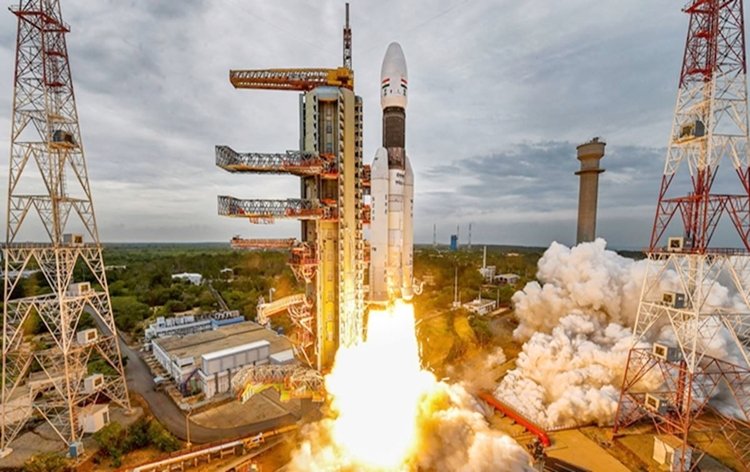After two weeks in Earth’s orbit, India’s Chandrayaan-3 spacecraft has set its sights on the next frontier: the Moon. The Indian Space Research Organisation (ISRO) announced the spacecraft’s transition into the translunar orbit in the early hours of Tuesday, marking a crucial step in its journey towards the lunar surface.
ISRO tweeted with excitement, “Next stop: the Moon,” as the spacecraft embarked on this historic mission. Chandrayaan-3 is expected to cover the distance to the Moon in approximately four days, and on August 5, it will enter lunar orbit, mirroring the way it orbited the Earth before. The craft will then gradually descend into lower orbits around the Moon until it achieves a circular orbit at an altitude of 100 km. It is from this orbit that the final descent of the lander and rover module will occur, tentatively scheduled for around August 23.
Launched on July 14, Chandrayaan-3 holds the promise of becoming India’s first spacecraft to execute a soft landing on the Moon. This feat has eluded India in the past, with Chandrayaan-2’s unsuccessful landing attempt in 2019. However, this time around, ISRO is determined to succeed and has taken extensive precautions and improvements to ensure the mission’s success.
Over the next 18 days or so, the spacecraft will continue its lunar journey, reducing its velocity and adjusting its orbit in preparation for the landing. The ultimate target is a circular orbit with a radius of 100 km around the Moon. Once this orbit is achieved, the lander and rover will separate from the propulsion module and commence their descent towards the lunar surface.
What sets India’s lunar missions apart is their unique trajectory. Rather than taking a direct route to the Moon, both Chandrayaan-2 and Chandrayaan-3 have capitalized on the Earth’s gravity to increase their velocity. By orbiting the Earth and gradually raising their orbits, they gain the necessary momentum for their lunar journey.
The landing site chosen for Chandrayaan-3 is only slightly different from that of Chandrayaan-2. The spacecraft is set to touch down at coordinates 69.36°S and 32.34°E, near the Moon’s southern pole. This region was selected due to the presence of several craters that remain permanently in shadow, potentially harboring water ice and valuable minerals.
To ensure the success of Chandrayaan-3, several critical modifications have been made based on the lessons learned from Chandrayaan-2. These improvements include sturdier legs for the lander, one less engine to ensure appropriate thrust, more solar panels on the surface, and the capability to land anywhere within a larger designated area of 4 km by 2.4 km.
The challenges faced by Chandrayaan-2 during its final descent were explained by ISRO Chairman S Somanath. The lander’s five engines developed slightly higher thrust than expected, which, while within parameters, accumulated errors during the critical stability phase. Moreover, the spacecraft’s software limited its ability to turn quickly when course corrections were needed, leading to difficulties in both slowing down its descent velocity and accelerating forward to reach the intended landing site. As a result, the lander hit the surface with higher velocity than planned, causing the crash-landing.
With valuable lessons learned from Chandrayaan-2 and careful preparations for Chandrayaan-3, ISRO is confident that this mission will be a resounding success. The potential discovery of water ice and precious minerals in the lunar south pole region could have significant implications for future lunar exploration and resource utilization.
As the spacecraft hurtles toward the Moon, India eagerly anticipates the safe landing of Chandrayaan-3, hoping it will make history by achieving a successful soft landing and paving the way for more ambitious space missions in the years to come.





